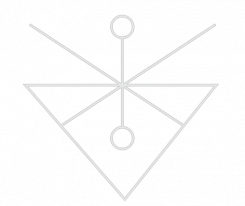Il grande e potente Fáfnir o Frænir è figlio del re nano Hreidmar e fratello di Regin, Ótr, Lyngheiðr e Lofnheiðr.
Non si trova nelle leggende, poiché i miti norreni, per un vero etheno, non sono leggende, ma sono storie esplicate su doppia interpretazione.
Anche per quanto riguarda il nome dell’eroe stesso, abbiate l’accuratezza di mantenere una linea coerente, se il termine è old norse, allora lasciamo respirare l’islandese…se si parla di scandinavi, non usate i termini germanici e così all’infinito.
Vi portiamo un piccolo stralcio archeologico che troverete dettagliato nel nostro volume “la Stregoneria dei Vani “, dove viene tracciata una parte fondamentale del mito della trasmutazione del drago, come pratica sciamanica legata al veleno.
Basta solo questo, che non si definirebbe proprio come una runestone ma piuttosto è una scultura, in quanto non è scolpita in una pietra ma in una roccia piatta e levigata, vicino a Ramsund, Eskilstuna Municipality, Södermanland, Svezia. Anno 1030.
“Il testo runico è ambiguo, ma un’interpretazione delle persone menzionate nell’iscrizione, basata altresì su iscrizioni (pietre runiche) trovate nelle vicinanze, è che Sigriþr (una donna) era la moglie di Sigröd che è morta. Holmgeirr è suo suocero. Alrikr, figlio di Sigriþr, ha eretto un’altra pietra per suo padre, chiamata Spjut, quindi mentre Alrikr era figlio di Sigriþr, non era figlio di Sigruþr. In alternativa, Holmgeirr è il secondo marito di Sigriþr e Sigröd (ma non Alrikr) è il loro figlio.”
Traslitterazione Ufficiale
L’Uso per l’uso del Mito di Sigurd nasce probabilmente la stretta somiglianza tra i nomi Sigurd (Sigurðr in Old Norse) e Sigröd, dalla radice Sig/vittoria, e Fáfnir come custode del tesoro al di là degli svartal.
Racconto visivo a sequenza:
Sigurd è seduto nudo davanti al fuoco e prepara il cuore del drago per il suo padre adottivo, Regin, che è il fratello di Fafnir. Il cuore non è ancora completamente arrostito e, quando Sigurd lo tocca, si brucia ed istintivamente si infila il dito in bocca. Entra in contatto con il sangue vivo del potente.
Mentre assaggia il sangue del drago dal cuore, inizia a capire la canzone degli uccelli… cosa avviene all’interno dell’eroe? Un potente io meditativo?
No!
L’IO umano non esiste più.
Si veste di passi esoterici particolari…subisce una trasformazione interiore.
Siamo difronte ad una fase iniziatica, si spezzano le cellule per azione del veleno del Drago e la vista si acuisce e l’udito si scopre aldilà dell’umana percezione.
Si varca la soglia di un custode di tesori…il più grande tesoro.
Entriamo nel margine delle terre di Hel. (Vedi presenza della spada Gram)
Catturiamo la conoscenza occulta. La stregoneria. La veggenza. Le Rune del Jötunn.
Gli uccelli (messaggeri delle tre radici) dicono a Sigurd che Regin non manterrà la sua promessa di riconciliazione e cercherà di ucciderlo, e ciò fa sì che Sigurd tagli la testa a Regin.
Regin giaceva morto a terra accanto alla sua stessa testa con i suoi strumenti da fabbro con cui rifaceva la spada di Sigurd.
Gram (Völsunga saga)
(Foto: Sö 101.)
A seguire:
Il cavallo di Regin carico del tesoro del drago.
Sigurd che uccide Fafnir
Ótr dall’inizio della saga.
Altri aspetti della leggenda sono mostrati sulle varie pietre e portali a doghe delle porte della chiesa a di Hylestad.
Tutto ciò a precisare che il Drago non muore per un io meditativo, ne per una proposta di ascolto, ma per la fase iniziatica di un soggetto atto al recupero del tesoro draconiano, proprio di una tradizione sciamanica descritta all’interno delle sacre scritture scandinave, e nel cerchio Völsung.
Per le traslitterazioni:
dizionario ufficiale runico (consultabile su richiesta)
Per i contenuti:
Laugrith Heid, La Stregoneria dei Vani, Anaelsas edizioni.
Laugrith Heid, Kindirúnar, Le Rune della Stirpe, Il Grimorio Necromantico, Anaelsas edizioni.
Laugrith Heid, Rún, i tre aspetti di una Runa, Anaelsas edizioni.
*Gli “share” senza citazione della fonte sono elemento di querela poiché si ledono gli elementi del copyright sanciti dalla legge italiana*
ENG:
The great and powerful Fáfnir, or Frænir, is the son of the dwarf king Hreidmar and brother of Regin, Ótr, Lyngheiðr and Lofnheiðr.
He can’t be found in any legends since, for a true heathen, northern myths are no fairy tales, but real stories with hidden meaning and often more than only one interpretation.
Regarding the name of the hero himself, we try to avoid any unecessary translations: if the word is in old norse we choose to leave islandic…as we would do with in a scandinavian context, which doesn’t need the use of gotic terms (for examples), and so on!
With this small archaeological excerpt, whom full details you can find on our volume ‘La Stregoneria dei Vani’, “we introduce” a shamanic practice in which is involved a poison component, like whose of the Dragon.
‘The runic text is ambiguous but one possible interpretation of the people mentioned in the inscription, based on runic stones inscriptions found nearby, is that Sigriþr (a woman) was Sigröd’s wife, who died. Holmgeirr is her father-in-law. Alrikr, son of Sigriþr, carved another runic stone for his father, Spjut; so Alrikr was Sigriþr’s son, but he was not the son of Sigruþr. Another possible interpretation, is that Holmgeirr was the second husband of Sigriþr, and that Sigröd (not Alrikr) is their son.’
Official Transliteration
The choice for the use of the Sigurd’s myth is probably due to the close resemblance between Sigurd (Sigurðr, in Old Norse) and Sigröd, from the root Sig / victory, with Fáfnir as guardian of the treasure beyond the svartal.
Sequentially explanation of the image:
Sigurd is sitting naked before the fire and prepares the dragon’s heart for his adoptive father, Regin, who is Fafnir’s brother. The heart is not yet completely roasted and, when Sigurd touches it, he burns his finger and instinctively sticks it in his mouth, savoring the living blood of the powerful dragon.
While he’s tasting the dragon’s blood from the heart, he begins to understand the song of the birds…so, what happens inside the hero? A connection with a powerful meditative ego?
Absolutely not!
The human Ego, no longer exists. He touches particular esoteric steps, and undergoes an inner transformation.
We are facing an initiatory phase, in which the cells are broken by the Dragon’s poison, sight sharpens and so does hearing, touching beyond human perception.
You cross the thresholds of a treasure keeper, the greatest ones. We enter the lands of Hel (cfr. the sword named Garmr).
We get occult knowledge, witchcraft and clairvoyance. The Runes of the Jötunn.
At this point, the birds (messengers of the three roots of Yggdrasil), suggest to Sigurd that his adoptive father won’t keep his promise of reconciliation, trying to kill him. This will cause the death of Regin by Sigurd, who will cut his head off. So Regin lies dead on the ground, next to his own severed head, with his blacksmith tools with which he rebuilt Sigurd’s sword: Garmr.
(this is Völsunga saga)
Next, on the stone, you find:
– Regin’s horse loaded with the dragon’s treasure.
– Sigurd killing Fafnir
– Ótr from the beginning of the saga.
Other aspects of the legend are shown on the various stones and doors of the church of Hylestad
All this is useful to clarify and affirm that the Dragon doesn’t die neither for a meditative Ego, nor for a proposal, but for the initiatory phase of the one who is able to recovering the draconian treasure, proper to a shamanic tradition described within the Scandinavian scriptures, and in the Völsung’s circle.
For transliterations:
Official runic dictionary (available on request)
For the contents:
Laugrith Heid, La Stregoneria dei Vani, Anaelsas edizioni.
Laugrith Heid, Kindirúnar, Le Rune della Stirpe, Il Grimorio Necromantico, Anaelsas edizioni.
Laugrith Heid, Rún, i tre aspetti di una Runa, Anaelsas edizioni.
Translation and Revision: Federico Pizzileo, Irene Benetti, Valentina Moracci
* every unauthorized use of sources protected by copyright will be pursued and sanctioned by Italian laws. *



Ylenia Oliverio
Fondatrice e docente dell'Accademia Vanatrú Italia.
Laureata in Filosofia e Storia, Master post Laurea in Beni Archeologici, Master in Preserving and Increasing Value of Cultural Heritage, conseguito a Roskilde (Copenaghen), ulteriore integramento post Laurea.
Archeologo da oltre 13 anni, specializzata in scavo dei cantieri urbani, ha incentrato la sua attenzione verso i culti dell’Europa del Nord e dell'Euroasia durante la sua permanenza nel Canton Ticino per stages formativi al Centro Studi Internazionali Luganesi.
Svolge attività di formazione e informazione, in Italia e in Europa, per la promozione, divulgazione e rivalutazione del Culto Vanico, del Paganesimo puro e degli Antichi Culti dell’Europa ed Euroasia.
Il primo incontro con la Stregoneria Tradizionale è avvenuto nel 1990.

